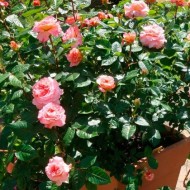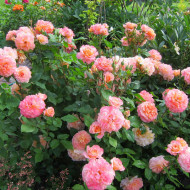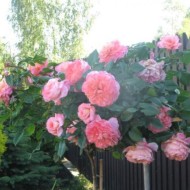All about planting and growing the aristocratic rose Augusta Louise
Content
- 1 Breeding details
- 2 Description of the rose of Augusta Louise
- 3 Advantages and disadvantages of the variety
- 4 Video "Acquaintance with the rose of Augusta Louise"
- 5 Features of agricultural technology rose Augusta Louise
- 6 Diseases and pests of the variety
- 7 Application of the rose of Augusta Louise in landscape design
- 8 Gardeners reviews
Breeding details
Already by the name of the variety, it becomes clear that the flower was dedicated to a beautiful woman, in whose honor it was named. She is a woman of royal blood, Countess of Stolberg, who wrote poetry and did translations. A hybrid variety of tea roses was developed in Germany over 20 years ago. Tea and remontant varieties became the parent varieties. The authorship belongs to Hans Jürgen Evens, one of the breeders of the Tantau concern.
However, there is information that back in the 70s of the XIX century, a similar variety of roses was bred in France by the scientist Guillot. But for unknown reasons, the variety did not take root in the country and was not officially presented.
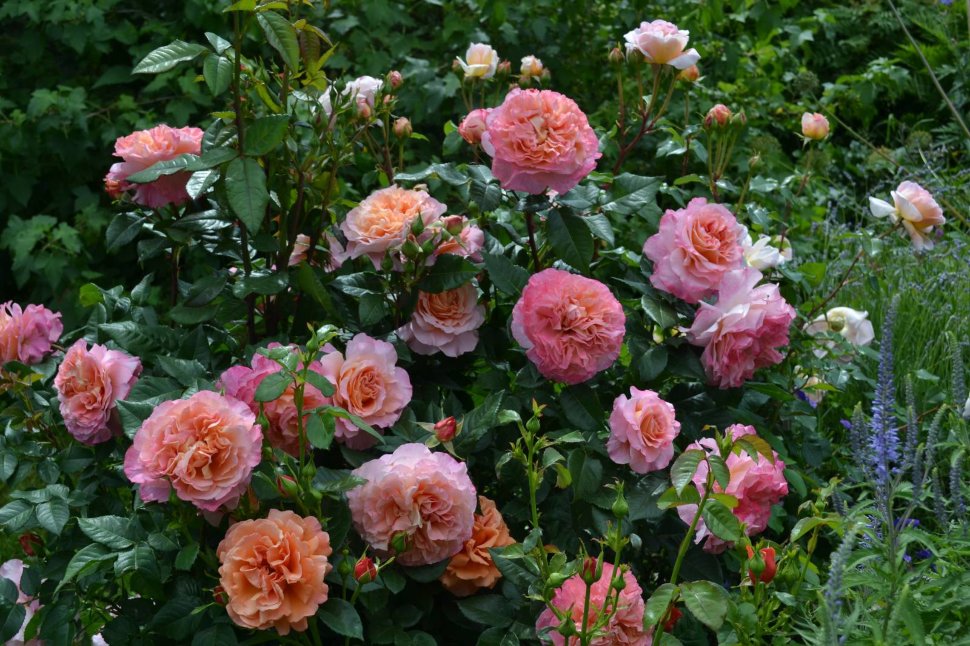
Description of the rose of Augusta Louise
The Luise Augusta hybrid has repeatedly been recognized as the best at international flower exhibitions, not only for its majesty and sophistication of appearance, but also for its exquisite aroma.
The plant grows up to 130 cm. The diameter is standard, but due to the height, the bush is not bulky and not too spreading, which allows plants to be planted at a distance of half a meter from each other. The buds are goblet, tall, of an interesting shimmering light orange with yellow color, which is replete with bright reddish spots.
The shade of the opened flowers can be very varied, but pale pink and peach tones prevail. According to gardeners, the most magnificent flowers are shades of pink champagne and unripe apricot. The flowers are large and voluminous (more than 10 cm in diameter), densely double. The petals are thin and delicate, there are more than 4 dozen of them in one bud. The richness of colors depends on the place of cultivation and compliance with the rules of care.
The scent of Augusta Louise won the highest awards for a reason: it can be felt already on the way to the bush. The pleasant fruity-raspberry shade is very pronounced, but nevertheless it is not obtrusive and not cloying. Augusta Louise begins to bloom in early summer. However, the flowering is wavy, so the bush pleases with buds for a long period. The largest and most luxurious flowers appear during the first and second waves, which fall in June.

Advantages and disadvantages of the variety
The rose of royal blood, undoubtedly, has a lot of advantages. However, too picky gardeners also note shortcomings that ordinary summer residents may not be visible.
- neat compact bush;
- magnificent large flowers of a delicate color with an amazing fruity aroma;
- does not require special care (standard care for rose bushes);
- good resistance to diseases and unfavorable growing conditions;
- undulating flowering, which prolongs the decorative life of the bush.
- a decrease in the quality and number of flowers by the end of the season: even enhanced feeding and proper care cannot ensure the same quality of flowers;
- burning of petals in the sun, as a result of which they lose their attractive color.
Video "Acquaintance with the rose of Augusta Louise"
In this video, the main varietal characteristics of a horticultural crop are sounded.
Features of agricultural technology rose Augusta Louise
Augusta Louise does not require special care: those who have previously grown roses will have no problems with agronomic measures. Read on to find out what nuances should be considered when growing this particular variety.
Planting and reproduction of a flower
You can plant a bush in open ground in both spring and autumn. When planting in the autumn, the time should be calculated so that the flower has time to adapt before the onset of cold weather. And in the spring - so that the soil is warm enough.
Rose is a sun-loving plant, so a sunny area will be the best place for planting. But it is important to take into account that only an adult, mature plant can withstand direct sun, so it is better to choose a slightly shaded area. Also, the space should be protected from gusts of strong winds, but the air should have free access to the bushes.
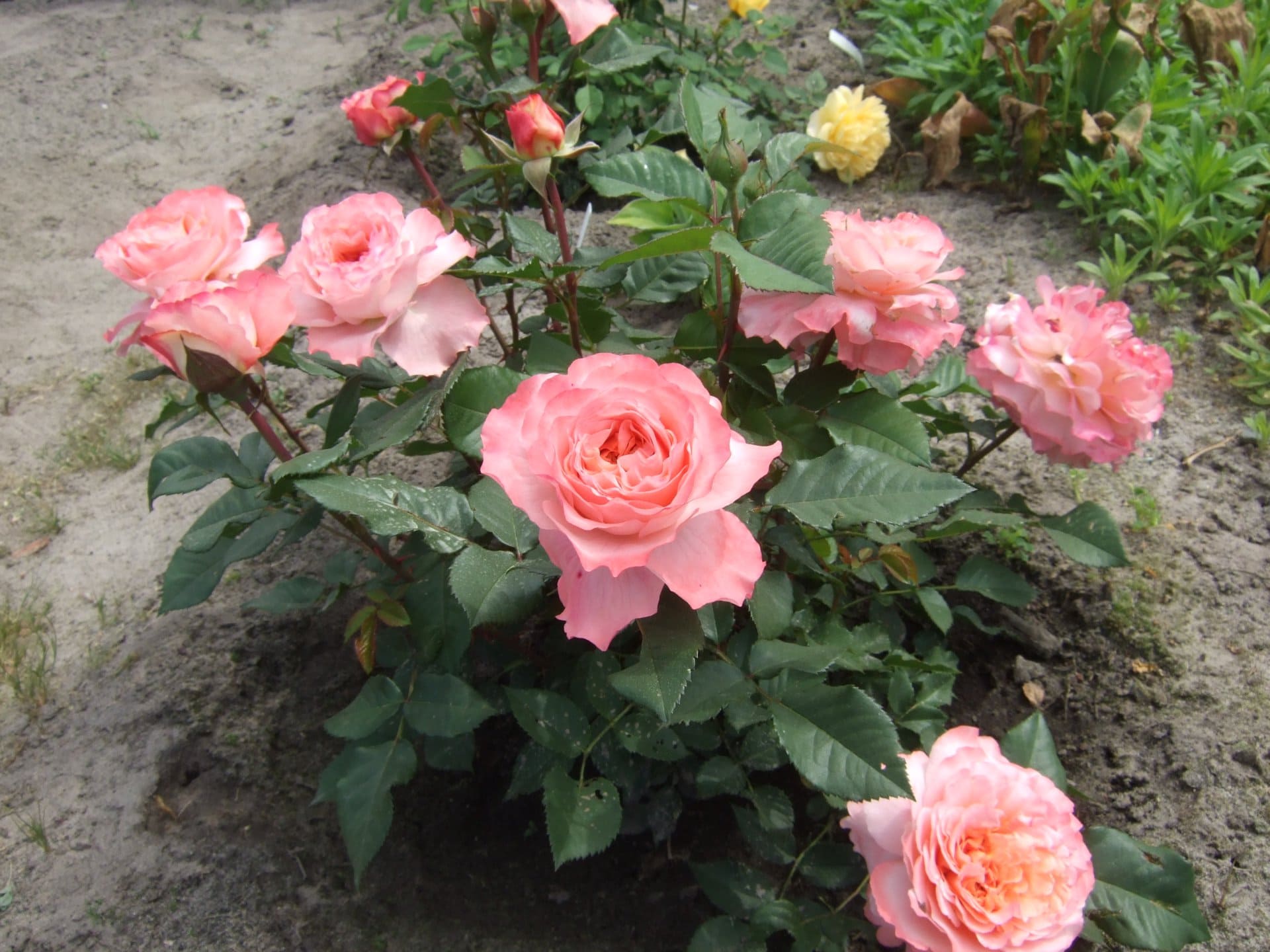
The best option for Augusta Louise is fertile soils with an abundance of nutrients. Shrubs can also be planted on loams, as well as soils with a low acidity level. To prevent rotting and rotting of the roots as a result of excess moisture, it is imperative to take care of the drainage layer.
The size of the planting hole should correspond to the size of the rhizome, but not less than half a meter in depth and in diameter. Before planting, you need to check the roots and remove dried and damaged processes. The inoculation site should not go deeper into the ground by more than 5 cm.
The rose is propagated only by cuttings. It is the vegetative method that allows you to preserve all the varietal characteristics of the flower.
General rules of care
August Louise is not afraid of natural precipitation, the main thing is to avoid waterlogging and stagnation of moisture. To do this, the soil in the near-trunk zone must be loosened after watering and rains. In the hot period, watering is carried out in the evening, after the sun goes down to the horizon. Otherwise, moisture remaining on the stem and leaves may cause a burn.
Rose pruning is carried out in spring and autumn, rarely, if necessary, it is carried out in summer. In the spring, after the end of frost, but before the start of active sap flow, all dried, damaged and diseased stems are removed. Further pruning is carried out after swelling of the buds in order to reduce the length of healthy stems, but at the same time leaving at least two correctly developing buds. In the fall, not only dried buds and stems, but also green shoots are removed from the bush, leaving only woody parts for wintering.
They feed the flower before planting and transplanting, as well as before the appearance of buds, to ensure lush flowering. For feeding, organic matter (in particular, humus) and a potassium-phosphorus complex are used. For the winter, the plant is not fed.
Preparation for wintering
Although Augusta Louise tolerates the cold well enough, it will not hurt to keep her warm for the winter. In the southern regions, it will be enough to huddle the bush at the level of the shoots left for wintering. In colder regions, the bush is additionally covered with straw, spruce branches or special covering material.
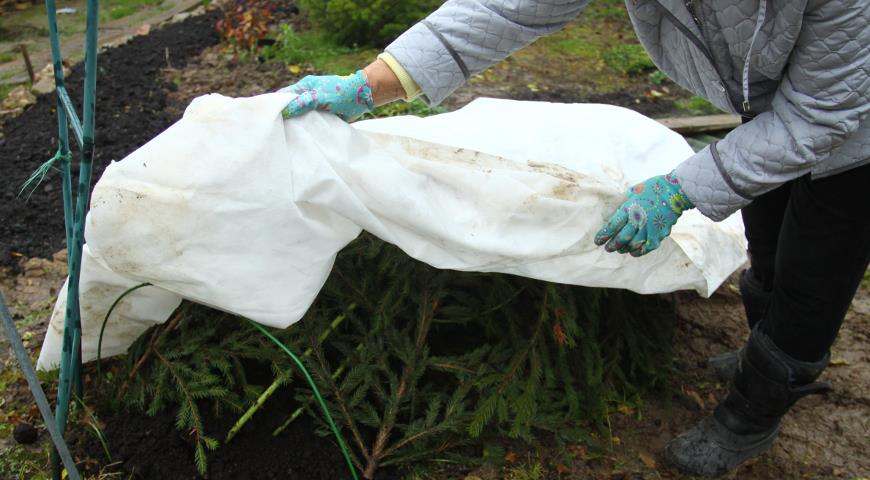
Diseases and pests of the variety
Rose has a good degree of resistance to various diseases. With proper care, fungal infections are not scary to the bush. Mature plants are rarely attacked by pests. But young growth can suffer from an aphid invasion.Chemicals (pesticides) can be used to control pests.
Application of the rose of Augusta Louise in landscape design
Augusta Louise is ideally combined with other varieties of roses, which do not have such lush and large flowers, but are rather leafy. In this case, burgundy roses are suitable for composing the composition. A good symbiosis with thornless double roses rugoses, which retain their decorative appearance until autumn.
Shrubs are perfect for decorating terraces and gazebos or the adjoining (wall) area. An exquisite aristocrat will look harmoniously as a part of a hedge. The first row of the hedge can be assigned to a lush shrub, and the background is harmoniously complemented by evergreen, deciduous or woody shrubs.
- Solitary landing
- Growing in a flowerpot
- Decorating garden paths
- Growing on a trunk
Gardeners reviews
“The most beautiful and fragrant rose in my garden. We planted bushes around the gazebo and now every summer evening we enjoy the unique aroma. Easy to care for, the flowers are gorgeous, blooms for about a month. "
“We have purchased a summer cottage plot along with a small rose garden. The neighbors gave a bush to Augusta Louise. We were so pleased that now we are planning to add shrubs to the hedge. "
Augusta Louise is a gentle aristocrat who will win your heart with the magnificence of buds and a pleasant aroma. Find a place for the queen, and your yard will attract the enthusiastic eyes of your neighbors.


